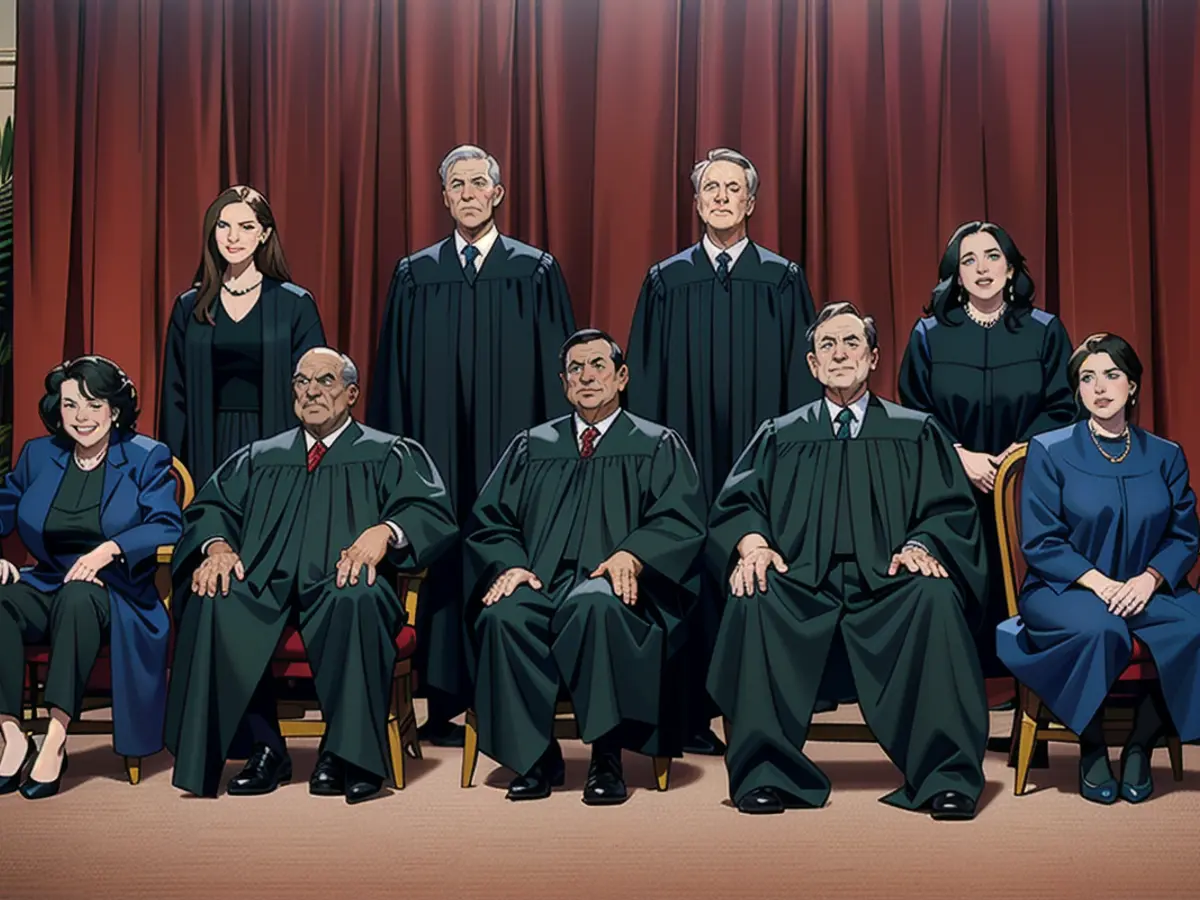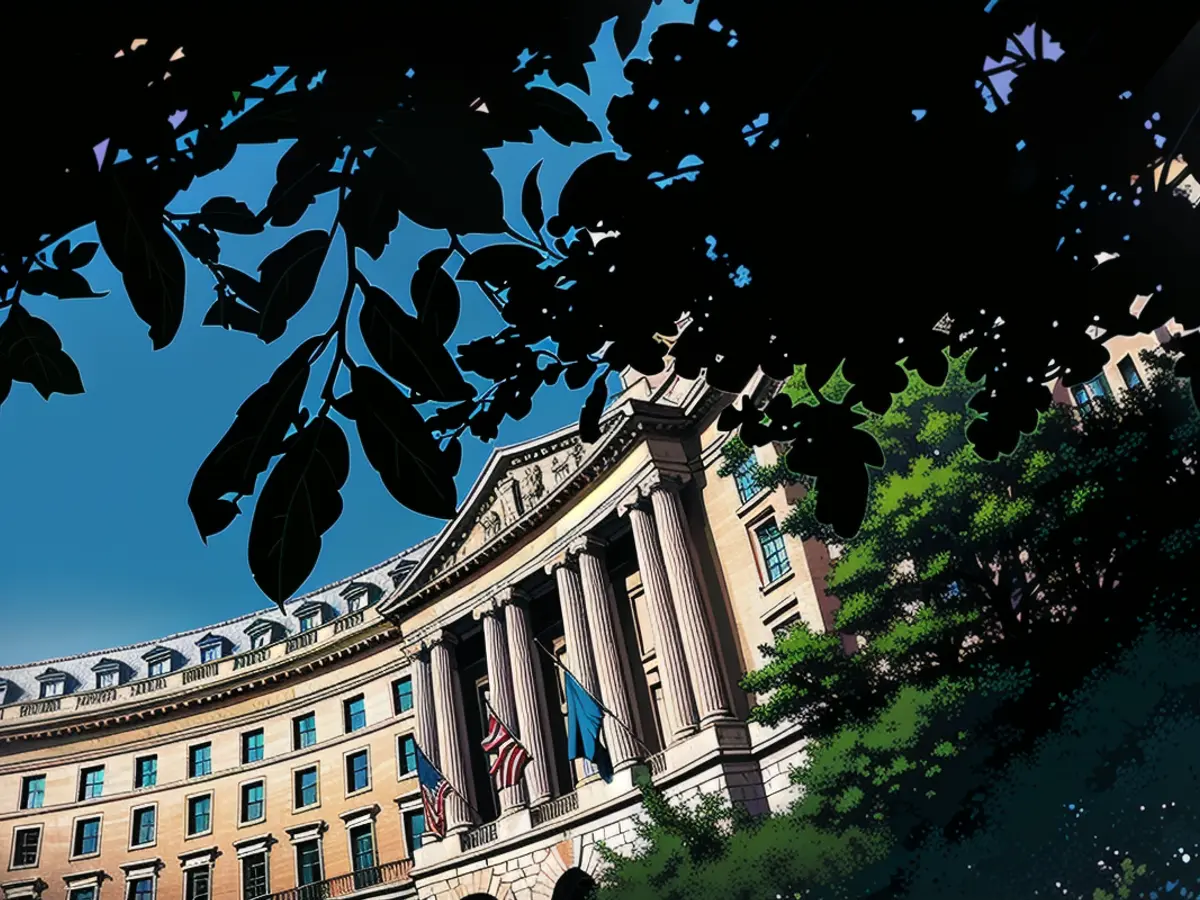The EPA under Biden's administration aims to tackle the climate crisis significantly. Will it withstand potential challenges from Trump's Supreme Court?
New regulations could prevent enormous amounts of pollution from reaching the atmosphere due to America's dirtiest industries, pollution that's contributing to global warming and causing intense heatwaves and powerful storms. However, these regulations might not stand a chance in the highest court of the nation.
The 6-3 conservative Supreme Court majority is having a significant impact on the Environmental Protection Agency's (EPA) agenda, as it has a heightened sensitivity towards cases related to the agency. This was noted by Richard Lazarus, a longtime environmental lawyer and Harvard Law School professor, who spoke to CNN.
"There's no doubt that many of the justices have their doubts about the EPA's rules and regulations," Lazarus added.
Over the past few years, the EPA has tried to ensure its rules align with the law as closely as possible in anticipation of facing legal challenges from the Supreme Court. The Supreme Court limited the EPA's authority to regulate greenhouse gases from power plants, although it didn't completely strip it away, in a 2022 case. During a conference in April, EPA administrator Michael Regan emphasized that his team is "very attentive" to the Court's responses.
"We're trying to design more robust rules in response to the environment we're in," Regan continued.
The EPA is being especially cautious with all its language, as even small details in their press releases and statements could be picked apart in court. News releases and Regan's comments made regarding four recent actions affecting the power sector were crafted with the intention of avoiding any legal issues, a source familiar with the situation told CNN. This represents an extraordinary example of the extensive scrutiny the agency is experiencing.
The EPA is dealing with legal challenges on almost every major regulation it institutes, mainly from Republican states and the fossil fuel industry. It's now facing potential challenges from the same entities on electric vehicle and power plant regulations, where any Supreme Court decisions could have significant worldwide consequences: The US is the second-largest polluter globally, and the EPA is the primary regulator for its most environmentally damaging industries.
The EPA is attempting to navigate a minefield by developing enduring regulations while being mindful of the court's potentially hostile stance.
"They're trying to avoid anything remotely novel," Lazarus said. "They don't do anyone any favor if they pass a rule that contradicts what the court has said, and then that rule is annulled a few years later."
The two factions of the court's conservatives vs. EPA
Environmental lawyers see the court's six conservative justices as divided into two camps: those who consistently oppose the EPA, and those who may not be decisive votes.
Justices Samuel Alito, Clarence Thomas, and Neil Gorsuch seem to be the most determined anti-EPA voices on the bench, experts say.
"Those are the three you can count on to be the most hostile to regulation, and Gorsuch and Alito in particular are not shy about their opposition to environmental regulation," David Doniger, a senior federal strategist at the Natural Resources Defense Council, explained to CNN.
"Alito's opinions are plainly audible; you can hear his skepticism and even mockery of the environmental position," Lazarus added. "Thomas, with his skepticism of federal authority and his staunch belief in state rights, adds another staunch vote against EPA."
Gorsuch is pushing to dismantle the federal regulatory process, as evidenced by his efforts to overturn a 1984 decision known as the Chevron deference, which grants federal agencies the ability to create regulations while compelling courts to defer to agencies in certain situations.
The remaining six justices, headed by Chief Justice John Roberts and Justices Brett Kavanaugh and Amy Coney Barrett, can't be considered strong allies of the EPA, but the extent of their opposition is unclear.
"Roberts wrote an opinion in the 2022 West Virginia v. EPA case that preserved the agency's power to regulate greenhouse gas emissions, but in a more limited way," Doniger said. "It will be interesting when it comes to administrative law and the EPA to see how each of these justices handles it."
Barrett raised some intriguing questions regarding EPA's challengers during recent Supreme Court arguments, leaving environmental attorneys curious.
In particular, Kavanaugh appears to have a background in regulations and administrative law from his time on the DC Circuit Court of Appeals, which considers challenges concerning federal regulations.
"He has a background in regulations and administrative law from his tenure in the DC Circuit Court of Appeals, so it's not that he's unaware," said Doniger. "But he'll likely challenge regulations that involve environmental oversight."
However, Alito is widely perceived as the most adversarial towards environmental regulations, while Gorsuch has advocated for overthrowing the regulatory process. Thomas offers a conservative perspective, valuing states' rights over federal regulation. With Roberts, Kavanaugh, and Barrett, their opposition is more ambiguous.
"Barrett may surprise us," noted Doniger. "She's been tough during arguments, so it'll be interesting to see how she sides on these issues."
As the EPA prepares, it must thread the smallest of needles, writing lasting regulations while accounting for the court's potentially antagonistic stance.
The Environmental Protection Agency (EPA) is facing opposition from various directions. The DC Circuit has dismissed one lawsuit against the EPA's rules on car emissions, while another is still being contested. Most recently, red states challenged the EPA's pollution regulations for heavy-duty vehicles.
In 2007, the Supreme Court ruled that the EPA has the authority to regulate greenhouse gases. However, the court has a history of overturning such decisions, including on controversial issues like abortion. The EPA's power to regulate pollution is under threat, despite this ruling, according to legal experts.
"I think we're dealing with a majority of the court that's skeptical of the EPA's power to regulate greenhouse gases, even though the court has decided this question," said Ann Carlson, an environmental law professor at the University of California Los Angeles and a former Biden administration transportation official. "In two different cases, the court has viewed (the EPA's) power as narrow, even though it exists. The question is then, how narrow is narrow?"
Despite the potential threat from the Chevron decision this summer, conservatives have fought back using a lesser-known legal principle called the major questions doctrine. This doctrine states that agencies cannot regulate anything that Congress has not explicitly given them authority to manage.
The major questions doctrine has been used "more aggressively than in the past," Carlson said, adding that she considers it a greater threat to the EPA than the Chevron decision.
If this doctrine is used frequently and effectively against the EPA and other agencies, it could render them powerless because it argues that they cannot act without Congress passing specific laws authorizing them to do so. Given the extreme political polarization, legislative progress in Congress is often slow.
The EPA and other agencies do have some hope. Recently, Congress passed a significant climate bill, which includes hundreds of billions in tax credits for people to buy cleaner cars, substantial tax incentives for companies to capture power, and oil companies to tighten methane leaks. This bill provides the agency with fresh Congressional direction that some experts believe the Supreme Court has been seeking.
"Congress has passed a law," said Doniger. "It doesn't get much clearer than that."
In addition to providing financial support for clean energy initiatives and electric vehicles, Democrats also updated the language in the Clean Air Act, labeling greenhouse gases as one of the forms of pollution covered by the law.
However, legal experts interviewed by CNN were divided on how effective these protections would be in the eyes of the courts. Some, like Doniger, are confident that it could be an effective defense.
"The court is saying we want to see clear Congressional intent, and we also dislike old laws," Doniger remarked. "Here you have a 2022 law."
Lazarus, on the other hand, is dubious that the court will be swayed by the idea that Congress is "just providing money" and that the IRA amendment to the Clean Air Act has "limited reach."
"We have growing problems and new issues require congressional action, and Congress has essentially stopped making laws," said Lazarus. "The EPA can't afford to wait for Congress to get its act together."

Read also:
- This will change in December
- Dikes withstand water masses so far - Scholz holds out the prospect of help
- Fireworks and parties ring in 2024 - turn of the year overshadowed by conflicts
- Attacks on ships in the Red Sea: shipping companies avoid important trade route
The Supreme Court's conservative majority, including justices such as Samuel Alito, Clarence Thomas, and Neil Gorsuch, tends to oppose regulations implemented by the Environmental Protection Agency (EPA). However, their more moderate counterparts, headed by Chief Justice John Roberts, also pose potential challenges due to their ambiguous stance on EPA regulations.
Given the potential opposition from the Supreme Court, the EPA is being particularly cautious in its approach to rule-making, ensuring that regulations align closely with existing laws and avoiding any novel policies that could be contested in court.
Source: edition.cnn.com







